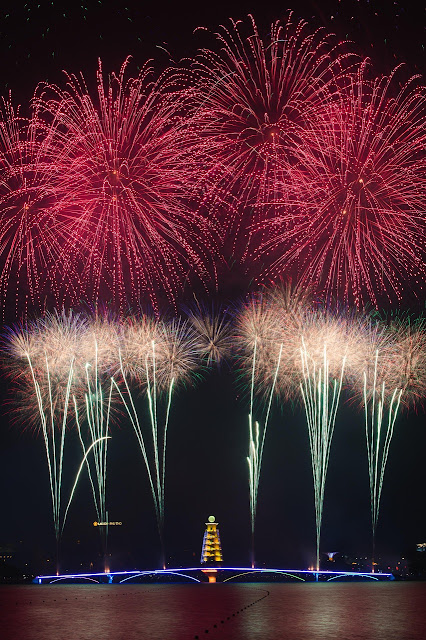How Colors Affect Our Brain: The Psychology and Power of Colors in Daily Life
Have you ever wondered why red feels bold, blue feels calm, or yellow feels happy? It's not just imagination — it's science. Colors deeply affect how we feel, think, and behave. In this unique blog, we will explore the fascinating world of color psychology and how different colors impact our brain, emotions, and daily decisions.
What Is Color Psychology?
Color psychology is the study of how colors influence human behavior. Marketers use it to attract customers. Artists use it to express emotion. Therapists use it to heal. Every color sends a signal to the brain and can change how we react — often without us even knowing.
The Science Behind Color and the Brain
Our eyes receive light, and the brain interprets that light as color. The color then activates different areas of the brain, including the emotional center (amygdala), memory center (hippocampus), and decision-making area (prefrontal cortex).
Colors can trigger hormones, affect heart rate, increase appetite, or reduce stress. That’s why hospitals use calm colors, and fast-food brands use exciting ones.
Let’s Explore What Each Color Does to the Brain
🔴 Red – Energy, Urgency, and Power
- Raises heart rate and blood pressure
- Triggers excitement and urgency
- Used in sales signs, danger signs, and sports logos
Example: Red is used by brands like Coca-Cola and Netflix to capture attention and boost energy.
🔵 Blue – Calm, Trust, and Intelligence
- Slows breathing and lowers stress
- Boosts productivity and mental clarity
- Seen as trustworthy and professional
Example: Facebook, LinkedIn, and PayPal use blue to build trust and reliability.
🟡 Yellow – Happiness, Warmth, and Creativity
- Releases serotonin (the happy hormone)
- Stimulates the brain and imagination
- Can cause anxiety in excess
Example: McDonald's uses yellow to feel fun and inviting.
🟢 Green – Nature, Healing, and Balance
- Relieves stress and calms the mind
- Symbol of growth and health
- Creates feelings of peace and balance
Example: Used in hospitals, wellness brands, and eco-products.
🟣 Purple – Luxury, Wisdom, and Mystery
- Stimulates problem-solving and deep thinking
- Associated with royalty and richness
- Used in spiritual and premium product branding
⚫ Black – Power, Elegance, and Depth
- Creates a bold and luxurious tone
- Represents sophistication and mystery
- Often used in fashion and tech
Example: Apple, Chanel, and Tesla use black to feel elite and clean.
⚪ White – Purity, Cleanliness, and Simplicity
- Reflects calm, innocence, and clarity
- Used in healthcare, tech, and minimal design
Example: Google, Nike, and Apple use white for clarity and focus.
Colors in Marketing and Branding
Color psychology is a core part of branding. Studies show:
- 85% of people say color influences their buying decision
- Color improves brand recognition by up to 80%
That’s why successful companies choose colors carefully based on their target audience.
Colors and Emotions
| Color | Emotion |
|---|---|
| Red | Excitement, Passion, Urgency |
| Blue | Trust, Security, Calm |
| Green | Peace, Health, Nature |
| Yellow | Joy, Creativity, Energy |
| Purple | Luxury, Wisdom, Imagination |
| Black | Power, Mystery, Luxury |
How Colors Affect Our Daily Life
- In Food: Red and yellow make us hungry. Green signals health. Blue suppresses appetite.
- In Clothes: Black for formal events, white for peace, red for attraction, blue for interviews.
- In Rooms: Blue in bedroom = better sleep. Green in living room = relaxation. Yellow in kitchen = appetite boost.
Color Therapy (Chromotherapy)
Color therapy is an alternative healing method where colors are used to treat physical and emotional problems. It includes:
- Blue light therapy for skin issues
- Green light to reduce stress
- Yellow for depression and low energy
Colors and Memory
Studies show that people remember colorful images better than black and white. Bright colors help with memory retention and learning. That’s why schools use colorful charts and books.
How to Choose the Right Color for Your Life
- Want to relax? Use light blue or green
- Need energy? Try red or orange accents
- Looking for creativity? Go with yellow and purple
- Need focus? Use blue with white background
Colors Around the World
Color meaning also depends on culture:
- White means peace in the West, but mourning in some Asian cultures
- Red is good luck in China, but danger in the West
- Yellow is sacred in India, but warning in the U.S.
So context matters when using colors globally.
Cool Color Facts You Didn't Know
- Pink was once considered a boy's color
- Blue is the most preferred color in the world
- Red cars are more likely to get pulled over!
- Black absorbs all light — that's why it feels hot
Conclusion: Add Color to Your Life, Mindfully
Colors are more than just decoration — they are powerful psychological tools. They can inspire joy, increase performance, reduce stress, and even help healing. Understanding how color affects the brain can improve your daily decisions, environment, and emotional health.
So, whether you're designing a room, building a brand, or choosing clothes — remember that color is communication without words. Use it wisely.
🙏 Support My Journey
If you found this article interesting and helpful, please support me by visiting and sharing my website:
👉 Website: https://lavkushtoolhub.blogspot.com
🙏 Your one visit can help change my life. Thank you for reading with heart!



Post a Comment